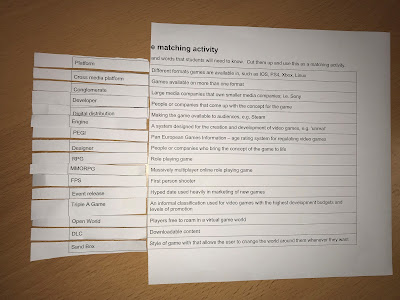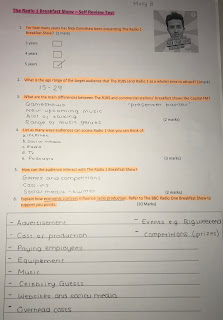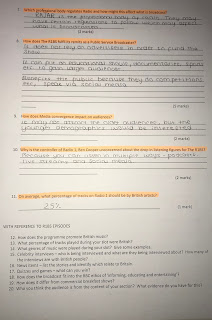17th may 2009 – First release of the game
21st may 2009 – Accounts can now be registered
24th may 2009 - Official Minecraft forum is opened
8th June 2009 - Multiplayer released
20th October 2009 – Beginning of survival test
29th January 2010 – Introduction of crafting system.
17th June 2010 – Minecraft passes 20,000 sales
22nd July 2010 – First over internet test of survival mode multiplayer
16th October 2010 – Mojang is founded
22nd December 2010 – Minecraft beta version is created
12th Jan 2011 – Minecraft reaches a million sales
1st July 2011 – Minecraft passes 10 million registered users
16th August 2011 – Minecraft pocket edition released for Xperia play only
17th November 2011 – Pocket edition released on IOS
9th May 2012 – Released on Xbox 360
25th October 2013 – Java update 1.7.2 released ‘the update that changed the world.’
13th December 2013 – Minecraft for Java surpasses 13 million sales.
4th September 2014 – PlayStation 4 edition released.
5th September 2014 – Minecraft Xbox 1 edition released.
10th December 2014 – Pocket edition released for Windows phone
30th June 2015 – Minecraft for Java Surpasses 20 million sales.
13th October 2015 – Minecraft Story mode released.
17th December 2015 – Minecraft Wii U edition released
2nd June 2016 – Minecraft sold over 100 million times over all platforms, makes 2nd bestselling game.
27th June 2016 – Minecraft announces release of Minecraft the movie for May 24th 2019
1st November 2016 – Minecraft education edition released
19th December 2016 – Minecraft pocket edition released on Amazon fire TV and Apple TV.
May 11th 2017 – Minecraft Nintendo Switch edition released
13th September 2017 – Minecraft released on Nintendo 3DS
December 2017 – Minecraft hits 74 million active players and 144 million total
Monday 26 February 2018
Friday 23 February 2018
Wednesday 21 February 2018
Introductory Essay To Minecraft:
Introductory Essay to Minecraft:
Minecraft was created by Markus Persson in 2009 and was developed by the Swedish production company ‘Mojang’. It was created in the summer of 2009, over only one weekend and to begin with only costed around £8 to download and play, it is now sold at around £25 due to its popularity. It was first published on a forum, and its first mode of advertisement was word of mouth, whereas now millions of pounds goes into the advertisement for the computer game.
It began only selling 40 copies of the game on its first weekend of sales, whereas now it has sold around 125 million copies overall proving its success across the gaming industry and on its platform of game. It is a sandbox computer game, which means that it is a building and construction game. This means that the player is free to play it without specific things such as Wi-Fi or on a computer. Due to the games freedom, it gives the player chance to build and express themselves within the game, which is one of the reasons it is so popular with the younger generation. Since its release it has sold 125 million copies across the world, its success is down to the fact it has adapted and developed since its release as it started as a ‘blocky-looking game’ and is now used for gamers to create their own world out of blocks, independently or with other people and other activities in the game include exploration and combat to target a larger demographic.
Since the release of Minecraft in 2009, it has been a commercial success. It is estimated that 55 million people play Minecraft every month, and is therefore the second best-selling game ever made, coming after Tetris. The company is worth around £1.09 billion, as it was brought out by Mojang in 2014. There are many reasons as to why it has become such a commercial success, including its popularity; Minecraft is played all around the world, in around 8 different countries including the US, Norway and Australia. This means high volume sales, which could be due to its availability and easy accessibility. Continuing from this, another reason that Minecraft is so commercially successful is due to its spread onto different platforms. These include, Xbox, Windows 10, Windows phones, Nintendo Wii U, PlayStation and Android phones. This makes it more easily accessible for a wider audience meaning more people are able to play, therefore resulting in more sales and then higher revenue from sales. Finally, another reason that is credible for the commercial success, is the spin off games and merchandise created since the release of Minecraft. Spin off games include ‘Minecraft; story mode’ and ‘Minecraft; Education Edition’. Both of these games will appeal to a specific demographic, which will commercially benefit the business as they are targeting a wider audience, rather than just focusing on the original demographic targeted by the original Minecraft game. The merchandise that is created and sold across the world, will catch the eye of gamers, and also promotes and advertises the game when people wear the merchandise, which will increase profit which makes it commercially successful.
Overall I believe that Minecraft has been a critical success since its release as it has influenced popular culture, meaning that many clones of the game have been created by game developers, the most famous being ‘Terraria’ which since 2017 has had 20 million accounts created. I believe that is has critical success because it is an open-ended video game, which means the goals of the game are up to each individual player. You can play in creative mode and ‘build whatever you can dream of’ or you can play in survival mode and ‘gather materials from the environment to build shelter’. This shows that it is a critical success as players can do exactly what the mission statement for Minecraft was. In conclusion, Minecraft is a successful game commercially and critically, as its popularity has proven this, by high sales volumes and therefore high amounts of revenue for the company.
Minecraft was created by Markus Persson in 2009 and was developed by the Swedish production company ‘Mojang’. It was created in the summer of 2009, over only one weekend and to begin with only costed around £8 to download and play, it is now sold at around £25 due to its popularity. It was first published on a forum, and its first mode of advertisement was word of mouth, whereas now millions of pounds goes into the advertisement for the computer game.
It began only selling 40 copies of the game on its first weekend of sales, whereas now it has sold around 125 million copies overall proving its success across the gaming industry and on its platform of game. It is a sandbox computer game, which means that it is a building and construction game. This means that the player is free to play it without specific things such as Wi-Fi or on a computer. Due to the games freedom, it gives the player chance to build and express themselves within the game, which is one of the reasons it is so popular with the younger generation. Since its release it has sold 125 million copies across the world, its success is down to the fact it has adapted and developed since its release as it started as a ‘blocky-looking game’ and is now used for gamers to create their own world out of blocks, independently or with other people and other activities in the game include exploration and combat to target a larger demographic.
Since the release of Minecraft in 2009, it has been a commercial success. It is estimated that 55 million people play Minecraft every month, and is therefore the second best-selling game ever made, coming after Tetris. The company is worth around £1.09 billion, as it was brought out by Mojang in 2014. There are many reasons as to why it has become such a commercial success, including its popularity; Minecraft is played all around the world, in around 8 different countries including the US, Norway and Australia. This means high volume sales, which could be due to its availability and easy accessibility. Continuing from this, another reason that Minecraft is so commercially successful is due to its spread onto different platforms. These include, Xbox, Windows 10, Windows phones, Nintendo Wii U, PlayStation and Android phones. This makes it more easily accessible for a wider audience meaning more people are able to play, therefore resulting in more sales and then higher revenue from sales. Finally, another reason that is credible for the commercial success, is the spin off games and merchandise created since the release of Minecraft. Spin off games include ‘Minecraft; story mode’ and ‘Minecraft; Education Edition’. Both of these games will appeal to a specific demographic, which will commercially benefit the business as they are targeting a wider audience, rather than just focusing on the original demographic targeted by the original Minecraft game. The merchandise that is created and sold across the world, will catch the eye of gamers, and also promotes and advertises the game when people wear the merchandise, which will increase profit which makes it commercially successful.
Overall I believe that Minecraft has been a critical success since its release as it has influenced popular culture, meaning that many clones of the game have been created by game developers, the most famous being ‘Terraria’ which since 2017 has had 20 million accounts created. I believe that is has critical success because it is an open-ended video game, which means the goals of the game are up to each individual player. You can play in creative mode and ‘build whatever you can dream of’ or you can play in survival mode and ‘gather materials from the environment to build shelter’. This shows that it is a critical success as players can do exactly what the mission statement for Minecraft was. In conclusion, Minecraft is a successful game commercially and critically, as its popularity has proven this, by high sales volumes and therefore high amounts of revenue for the company.
Tuesday 20 February 2018
Sunday 18 February 2018
Radio1 Breakfast Show - Production and Distribution
Looking at the Radio 1 playlist (left) and the breakfast show playlist (right), you can see a huge difference in the top songs. Radio 1 playlist, consists of songs in the top 40 charts, therefore new & popular songs. Whereas, the breakfast shows playlist has a wide range of songs; new, old and classics.
I think the reason the playlists are so different it because they have to attract to the audience that listen to each show. The breakfast show has a wider range because a more varied audience listen to it, having older songs such as the spice girls will be relatable for young adults as they are songs from their childhood. Whereas Radio 1 just mostly plays the charts as it is for the younger audience.
You can see the link to both these playlists trying to target the largely under 30 audience as they are the people who are most likely to listen to new and popular songs in the charts as it will be a range of music genres. Also, the breakfast show playlist is new songs but also songs which would be around when the audience would be growing up so they would know all the songs. This targets them as people will enjoy the songs and not want to change the radio station.
Friday 9 February 2018
Monday 5 February 2018
Making the Radio 1 Breakfast Show
What are the different responsibilities of presenters and producers?
Need to ensure they ask the best possible questions to the person they are interviewing to interest the audience, being entertaining. Producers need to make sure tasks or games suit the person. Guests need to be briefed, radio callers need to be spoken to so they knwo what todo. Everyone on the show needs to be told not to swear, mention certain brands etc.
What preperation goes into each programme?
The day before is usually when they decide the routine for the show, e.g. questions they'll ask the person being interviewed and timings. The timings are flexible so they are able to change what they speak about, meaning that they can speak about more recent interesting things if something new breaks. Due to the target audience and people who are being interviewed, they do not need to spend alot of time in creating long in depth questions, instead they need to ensure that the 10 questions they ask, are the best questions they can ask. Constant preperation through their Whatsapp group chat about up coming news. Every morning when the producers come in they need to check social media and news sites to check that they are going to cover everything that needs covering.
Whats most challenging and most enjoyable about working on the show?
Enjoyable- working together as a team, as a 'disfunctional family'. Also finding things that you find funny that could be spoken about on the radio. Being able to play new music, be informative creating a good show. Being able to chose who the people who come on so that they can interview them.
Challenging- meeting the stats and figures of listeners etc. Having difficult guests, e.g. boring with closed answers.
What are the team dynamics like?
The team have to work close together and communicate alot in order for everyone to create the best show for the millions of listeners. Working in a small studio working close together, so everyone has to know what eachother are like (likes and dislikes). Producers ask each other questions to learn new things and new ideas. New producers makes people want to learn new things, in order to make the show better. Music team so that the same music isn't repeated.
How can you break into radio?
Go to your local radio station to get used to how it all works, and to get used to the environment. Contacting people in the radio industry directly, asking for experience without caring about rejection. Taking part in student radio, to get used to it and it can also promote you so that you meet other people who are in the radio industry to give you chances and to allow you to get experience in a range of things.
Need to ensure they ask the best possible questions to the person they are interviewing to interest the audience, being entertaining. Producers need to make sure tasks or games suit the person. Guests need to be briefed, radio callers need to be spoken to so they knwo what todo. Everyone on the show needs to be told not to swear, mention certain brands etc.
What preperation goes into each programme?
The day before is usually when they decide the routine for the show, e.g. questions they'll ask the person being interviewed and timings. The timings are flexible so they are able to change what they speak about, meaning that they can speak about more recent interesting things if something new breaks. Due to the target audience and people who are being interviewed, they do not need to spend alot of time in creating long in depth questions, instead they need to ensure that the 10 questions they ask, are the best questions they can ask. Constant preperation through their Whatsapp group chat about up coming news. Every morning when the producers come in they need to check social media and news sites to check that they are going to cover everything that needs covering.
Whats most challenging and most enjoyable about working on the show?
Enjoyable- working together as a team, as a 'disfunctional family'. Also finding things that you find funny that could be spoken about on the radio. Being able to play new music, be informative creating a good show. Being able to chose who the people who come on so that they can interview them.
Challenging- meeting the stats and figures of listeners etc. Having difficult guests, e.g. boring with closed answers.
What are the team dynamics like?
The team have to work close together and communicate alot in order for everyone to create the best show for the millions of listeners. Working in a small studio working close together, so everyone has to know what eachother are like (likes and dislikes). Producers ask each other questions to learn new things and new ideas. New producers makes people want to learn new things, in order to make the show better. Music team so that the same music isn't repeated.
How can you break into radio?
Go to your local radio station to get used to how it all works, and to get used to the environment. Contacting people in the radio industry directly, asking for experience without caring about rejection. Taking part in student radio, to get used to it and it can also promote you so that you meet other people who are in the radio industry to give you chances and to allow you to get experience in a range of things.
Subscribe to:
Posts (Atom)





